More on Mary Rose Treasures
Monday 17th April 2017
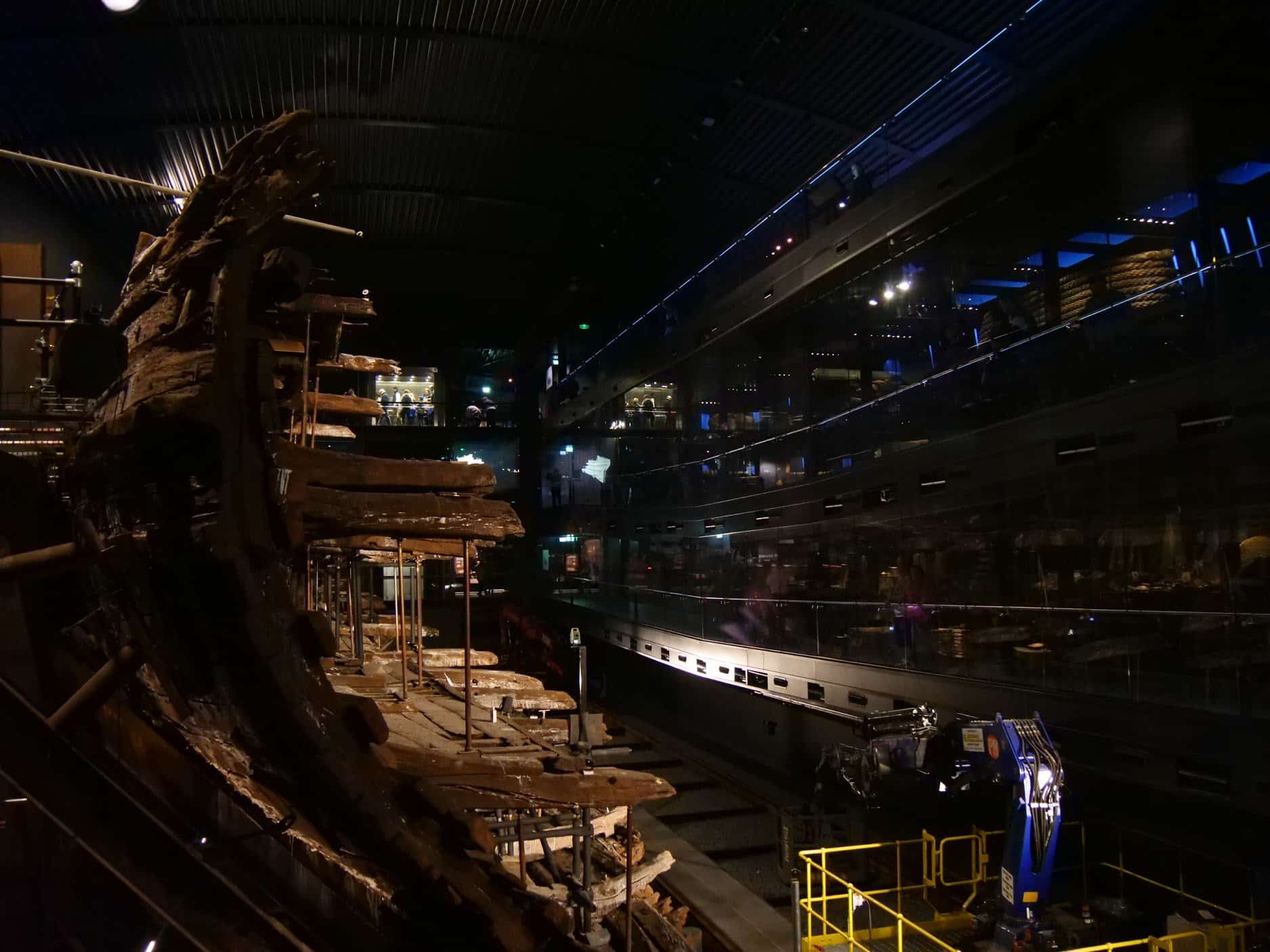
It would be too much to blog on the shipwright’s work when the ship is so large. Boats would be much easier. It wasn’t in any way nostalgia that called me to visit Portsmouth nor anything to do with a nautical life on the open sea. It was wood and its working that drew me, you know, the centuries where wood became a world for seafarers suspended lives in. Something happens to you when realisation catches you unawares. It’s not shock, and surprise doesn’t quite measure up somehow. There is a sense of overwhelming privilege at you suddenly being privy to fully comprehending whole meaning about the significance of something. I have seen multiple thousands of hand tools through my life as a crafting artisan using them and then collecting and researching them too. Often I can stab a good guess about their age, functionality, trade and so on. Most of the time I know exactly everything about them, but seeing tools and equipment you absolutely know are 500 years old somehow becomes all consuming. When tools and equipment and a way of life are encapsulated in a life holding time capsule you are absolutely stumped, stopped and humbled. This time capsule, the Mary Rose, is nothing less than an archeological dig. I know that, but somehow a dig is attached to a globe full of coexisting entities. The ship, the isolation of life within a wooden hull, for the main part fully in tact, seemed somehow to be a preservation of actual fact but in a very different way and for a different reason. The reason records life as it was when it stopped. All seemed to remain essentially the same, and it’s that that somehow seems to me the most humbling. No machines as we might know them existed here. 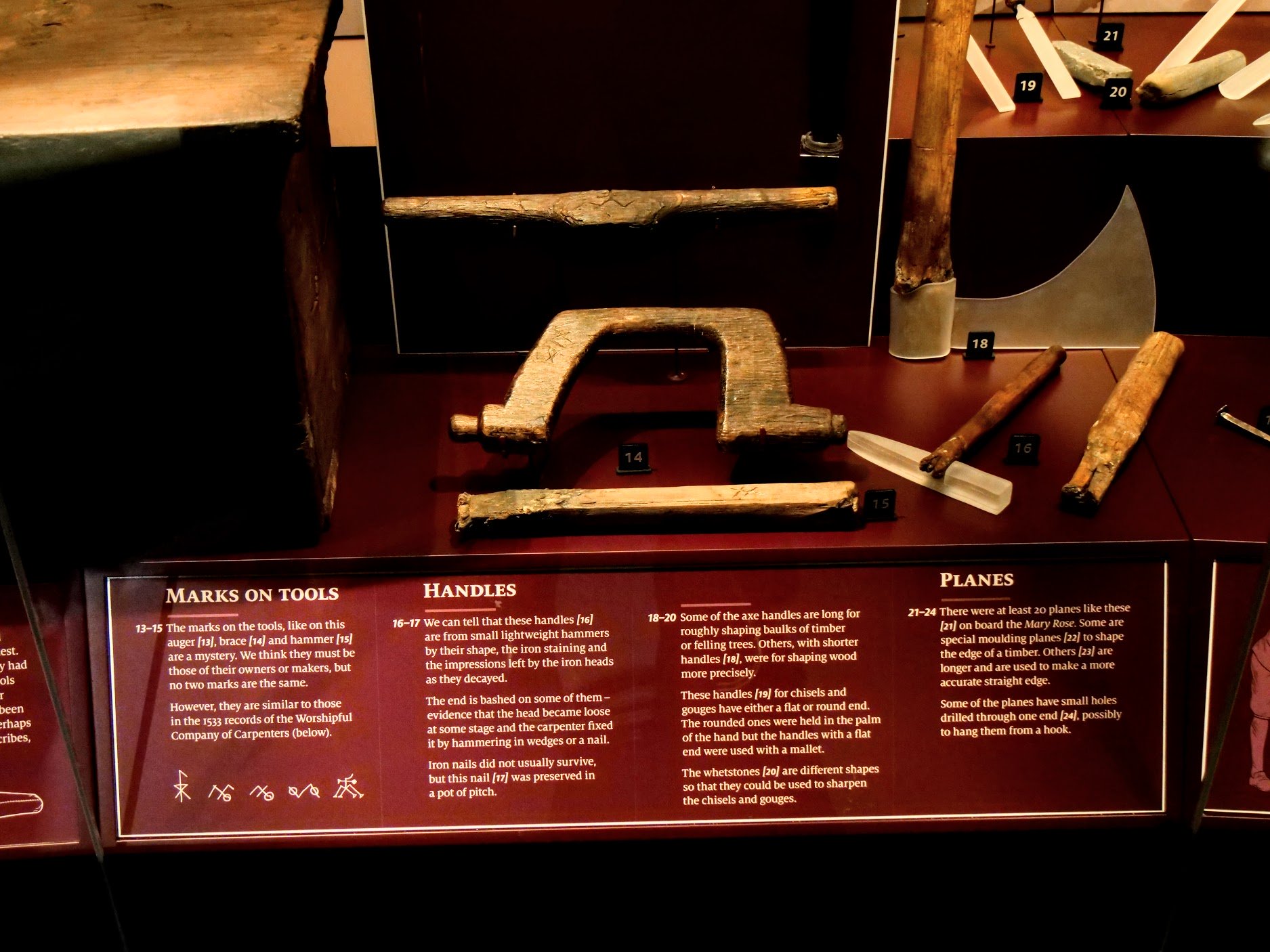
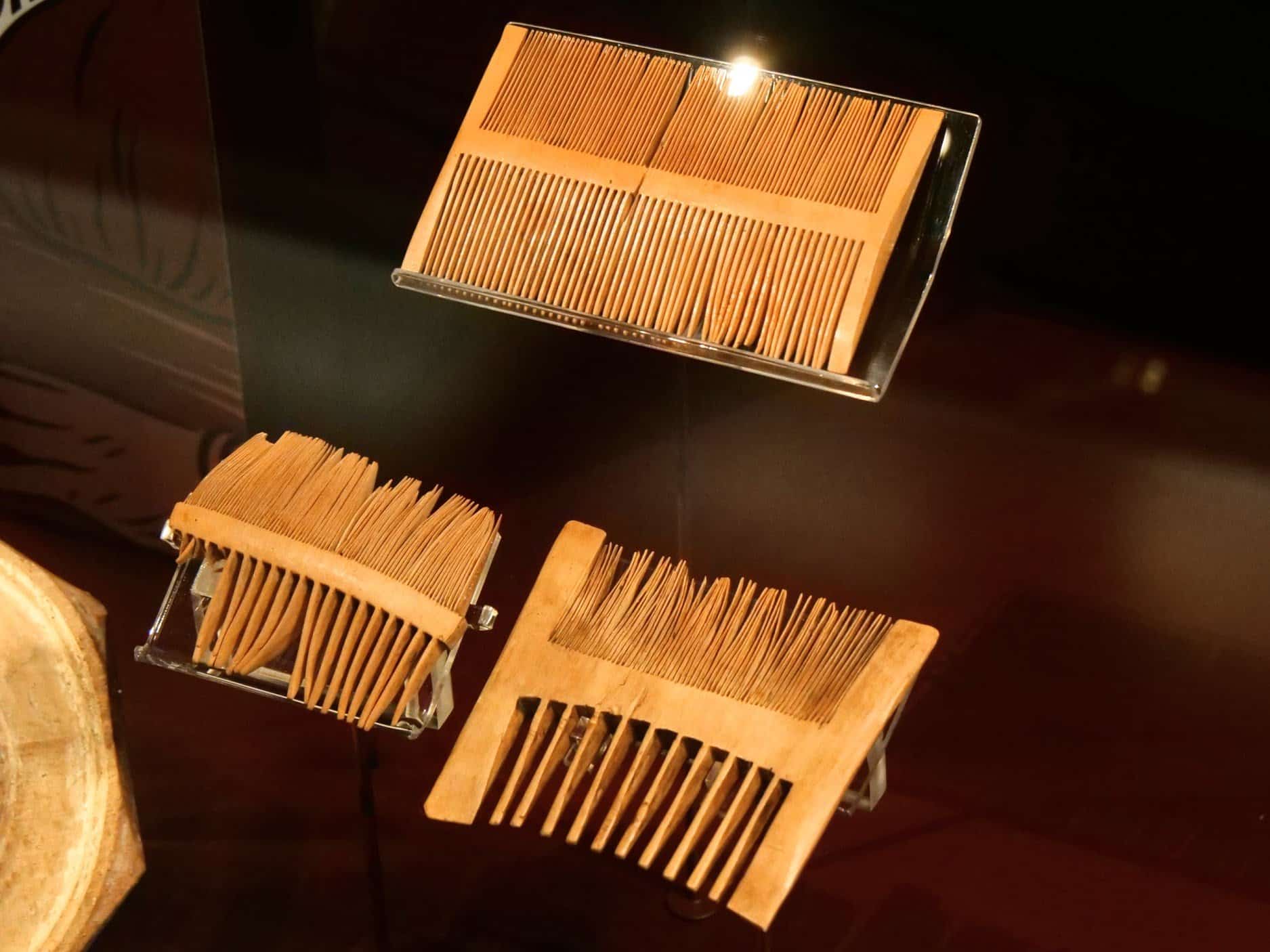
I have some laurel I have dried that is most suitable for making wooden combs from and I plan to make some to both use and to understand the process. It would help to handle one of these for ten minutes. But just look at these, all three fine toothed on one side and more coarse on the other; you realise of course that these men set the precedent for the plastic versions we might be using commonly today, yet we might think it was a more modern design development. Remember here though that most men wore beards that also needed combing, hence two levels of tooth sizing. I have heard people sat that once you use a wooden comb you will never return to plastic. Soon I will know. I have a lovely horn comb bought for me as a gift that I like to use, and I have some very fine plastic ones too. I look forward to making the wooden ones very soon.
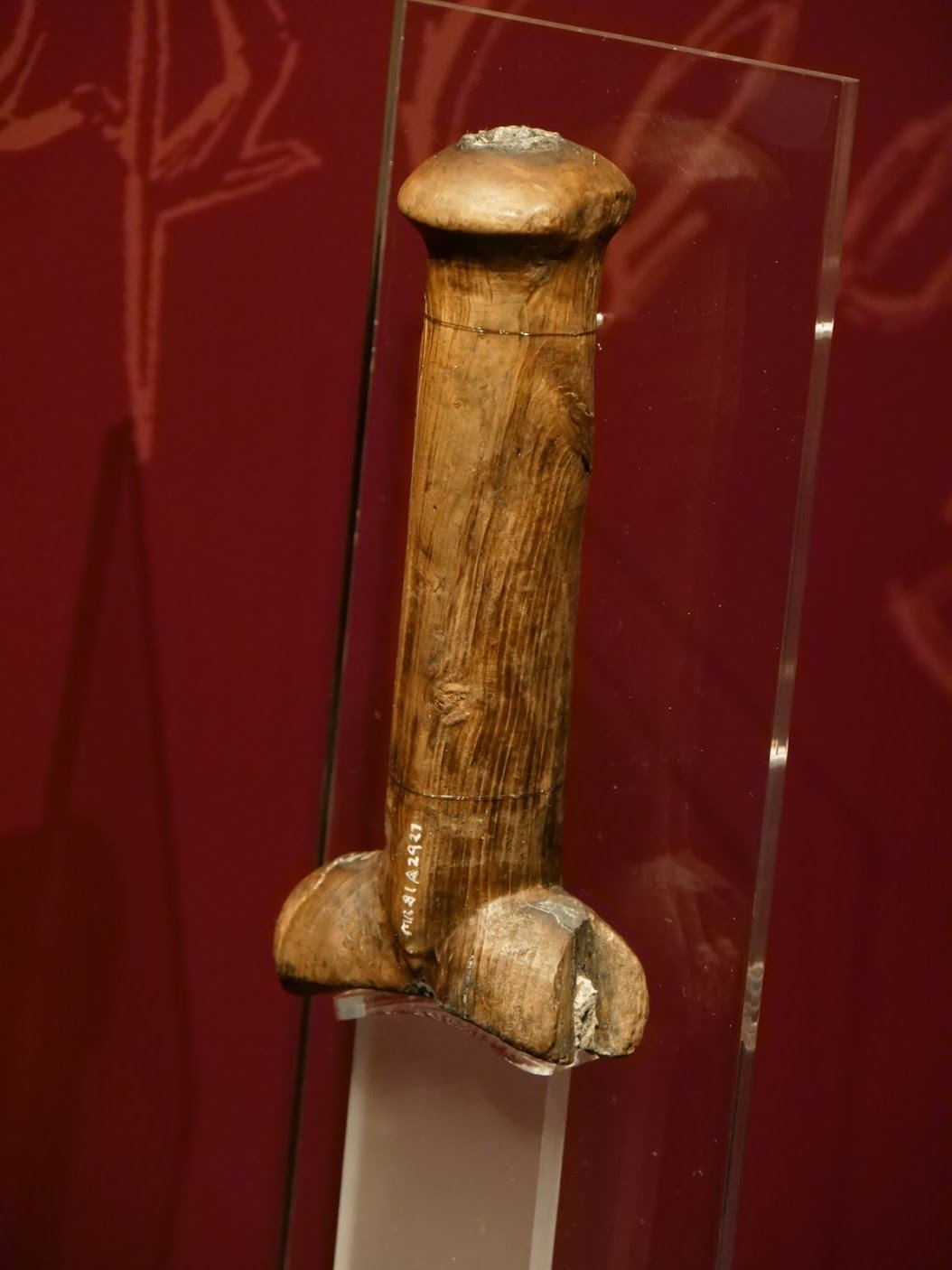
Many handles for tools were made from woods such as elm, oak and ash, depending on the tool type. I liked this shouldered handle. Look how the grain is interlocking.
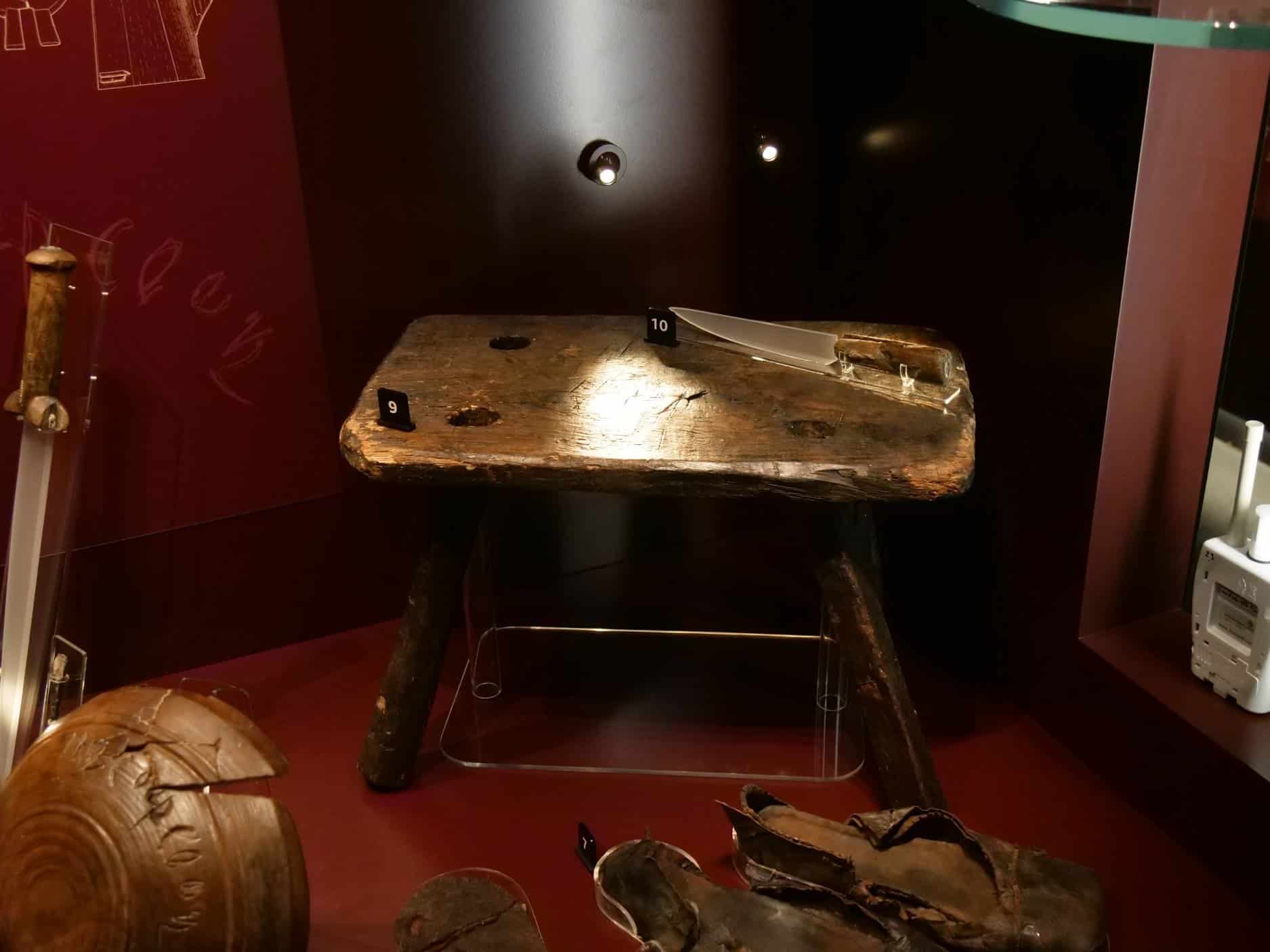
This stool is a stool type we have made often enough. I taught my children and many others how to make them when they were young. Oh, yes, and we even had a woodworking masterclasses series we did on making one. Of course they are scaleable and you can create many furniture pieces using the same methods.

Bowls as turned vessels are simple and easy to make on a lathe of any type. Turning was another common country craft and came from just about any part of the tree and would be turned green as turning green wood is like peeling a potato inside and out.

To be frank, I relish the idea of making items for the remainder of my life. Now that I am older I don’t just look at what was made but what can still be made by anyone and everyone with a handful of tools. This spoon could as easily have been whittled from scraps on board if it wasn’t made for the departing ship beforehand. I love to think that it was thought into being by a man whichever it was. 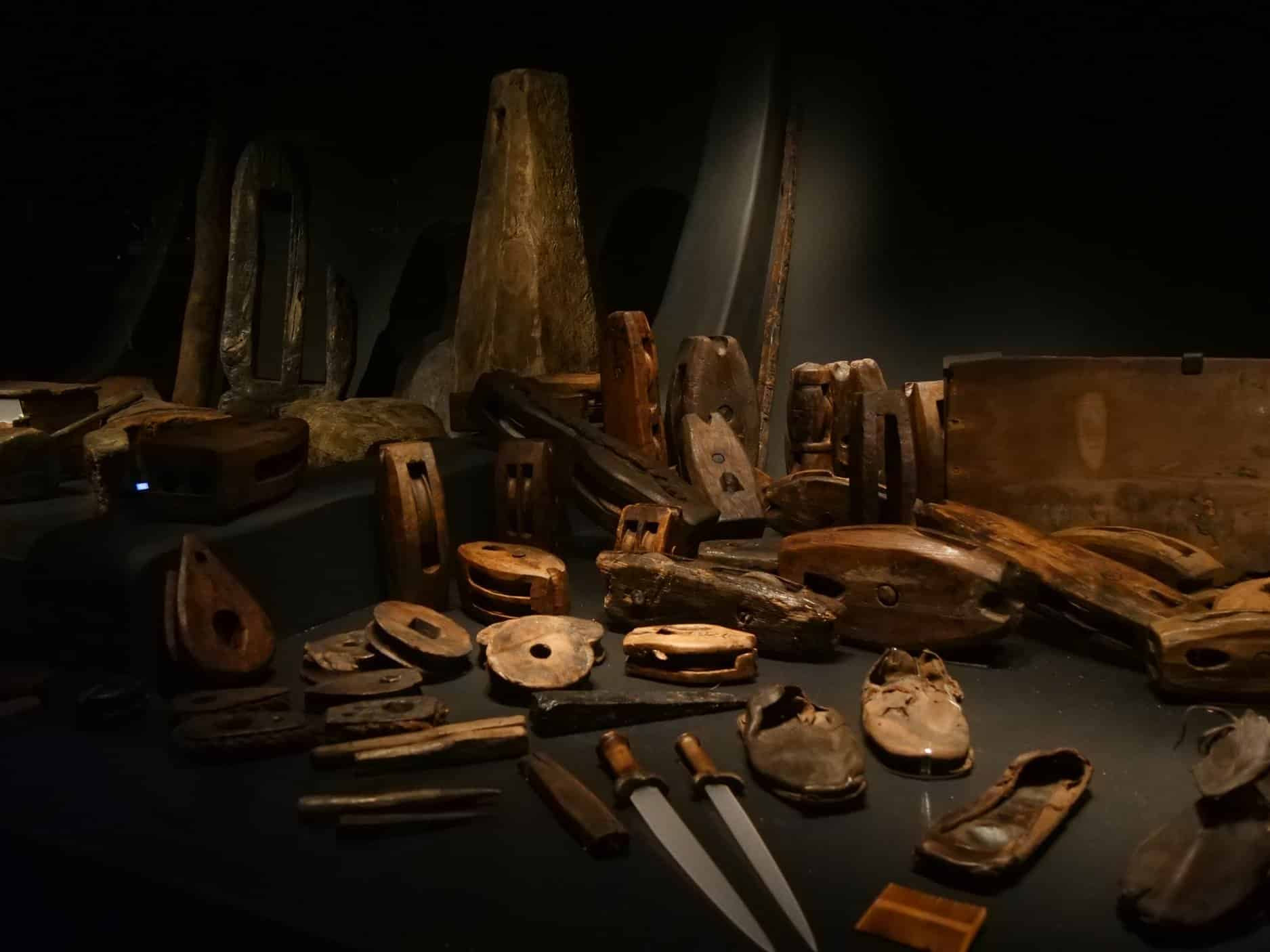
So you begin to see, with thousands of artifacts made from predominantly wood depicting life aboard a warship, what a fascinating lure it is to we woodworkers. You gotta go!


the stone axe, the carved spoon, and the Stanley #4 — all artifacts of our insatiable desire to fiddle with our hands and fashion what we need. Who will examine my tools in 500 years?
I really do look forward to seeing a short video from you about making a wooden comb in the near future Paul. I think that would be quite fascinating to see – and of course for us to replicate later on! A great way to fulfil our Xmas and birthday requirements as well. Thanks for the trip back through history – and to our future? Hopefully.
Cheers and thanks
In Stockholm they have a similar museum for the ill-fated Wasa that sunk 1300 meters into her maiden voyage in 1628. Well worth a visit if you are in those parts.
I watched a video a few days back on YouTube of a guy making a wooden block and tackle to use for raising timber frame bents. It was marvellous to watch. If anyone’s interested look up Mr. Chickadee.
Fascinating story woven from your trip to the Mary Rose museum. History has always been a passion of mine. Perhaps it is responsible for my renewed interest in hand tools. I would be like you Paul, yearning to touch the artifacts, so I could FEEL the history of the tool. Much like Jean Luc Picard (Patrick Stewart) mentioned in Star Trek First Contact when he was fist able to touch the Fictional Warp ship “The Phoenix”. It is to bad that in order to preserve these artifacts we cannot handle them and closely examine them for tool marks and other “wear indicators” which would make the whole experience so much more enjoyable. If I were you I would write to the governing body of the museum and request special permission to examine them more closely. A man of your stature and reputation might be granted permission to handle these objects with gloves on. I’ll keep my eye out for you video on wooden combs!
For bowyers, the Mary Rose was a real treasure. It was a war ship, and about 150 English long bows were found on the ship. There were only fragments and drawings of the bows until the MR was found. Now there are 150 of intact bows from 500 years ago. It’s a different kind of woodworking, but all hand tools. Axe, plane, draw knife, spoke shave, scraper… And then you get to shoot it.